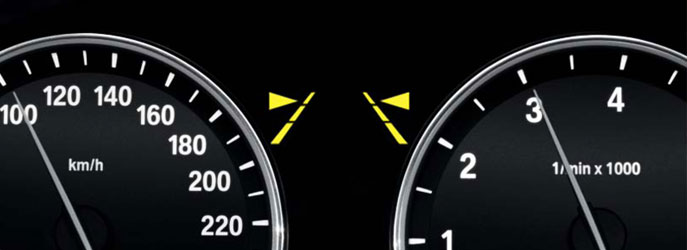Lane Departure Warning Systems: Road trip tech series #3

Long live the road trip! According to recent survey, a large majority of British Columbia motorists plan on taking a driving vacation this summer.
Fatigue on long drives, especially on straight highway stretches, can result in inadequate following distances and inattentiveness on the part of the driver.
While most drivers recognize the important of planning ahead such as servicing a vehicle before a road trip, auto manufacturers have also been adding new technology to their vehicles to make driving easier but more importantly safer for everyone.
These latest driver aids are the opening volleys towards a semi-autonomous driving future — one that promises increased speed, safety, and efficiency, as well as reduced fatigue.
In this final part of our three-part series, we’ll be taking a closer look at lane departure warning (LDW) systems, designed to help you safely stay in your lane.
According to the Insurance Institute for Highway Safety in the USA, LDW systems, if used properly, could save 7,529 lives per year in the USA.
According to a November 2009 study done by the US National Highway Transportation Administration, about 70% of all single-vehicle highway fatalities in the United States occur in run-off-road accidents.
Since run-off-the-road accidents occur when a vehicle leaves its lane and drives off the roadway, lane departure warning systems have the potential to help prevent many fatal accidents.
The technology behind it
Similar to adaptive cruise control (ACC) systems, lane departure warning systems are designed to prevent, or at least reduce, the incidences of high speed accidents on highways.
In a nutshell, LDW is a driver-aid system based on an integrated video camera that is mounted behind or near the rearview mirror.
This camera relays the video images to a computer module where it is analysed for lane markings. The system then identifies the lane markings and tracks their position permanently.
Some more advanced LDW systems are also able to help you take corrective action via the electronic stability control system or the electric power steering system. Like many other driver-aid systems, the system can be disabled by the driver via a switch on the instrument cluster.
What happens when I’m about to cross the line?
To preclude unnecessary warnings, most LDW systems are automatically deactivated in city traffic, at speeds typically below 70 km/hr.
Should your vehicle stray outside of the limits of the lane without the turn signal activated, the system provides a visual, audible, or even a tactile warning. LDW systems also take your vehicle’s speed into account meaning that if you are travelling at higher speeds, the warning is provided earlier rather than later, allowing you adequate time to correct your steering input before accidentally crossing into an adjacent lane.
Infiniti’s lane-departure warning system notifies the driver via a flashing light and a warning chime if it detects the vehicle drifting out of its lane without the turn signal activated. Honda’s does the same with a warning light in the middle of the speedometer.
BMW’s Intelligent Lane Departure Warning system kicks it up a notch. If you attempt to change lanes without first activating your turn signal, the system vibrates the steering wheel to simulates the sensation of driving on a rumble strip. This is sure to get your attention!
BMW’s system also provides a warning icon on the vehicle’s heads-up display, if so equipped.
System limitations
Thanks to higher resolution cameras and more advanced control unit algorithms, the latest LDW systems are more capable than ever. However, even the most advanced systems have their limitations.
Since these systems rely on visual information to track the relative position of a vehicle within its lane, anything that obscures the lane markers may render the system inactive. This includes inclement weather conditions such as heavy rain, fog, or snow. Excessive glare from the sun can also disable the system.
Regardless, by warning the driver, or even taking automatic corrective actions, these systems are able to prevent many collisions and run-off-road accidents.

